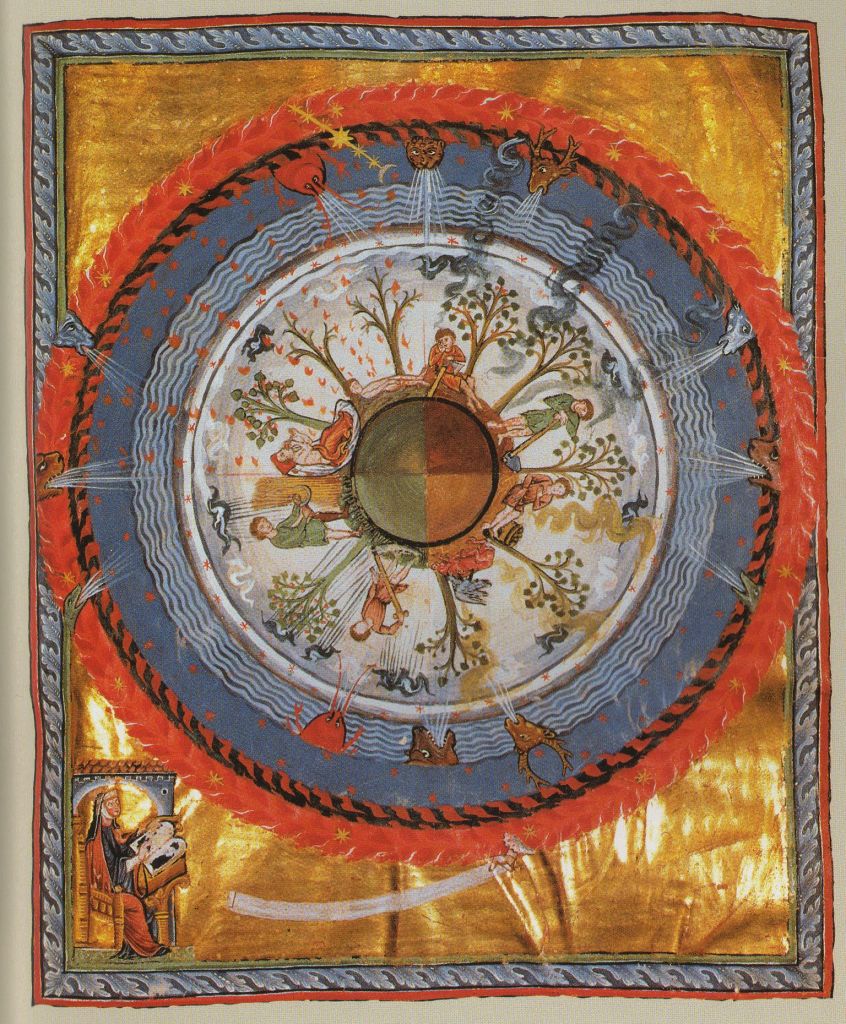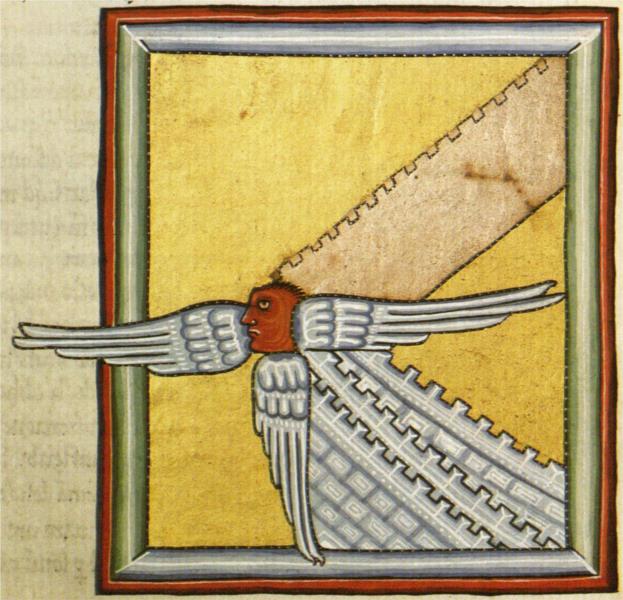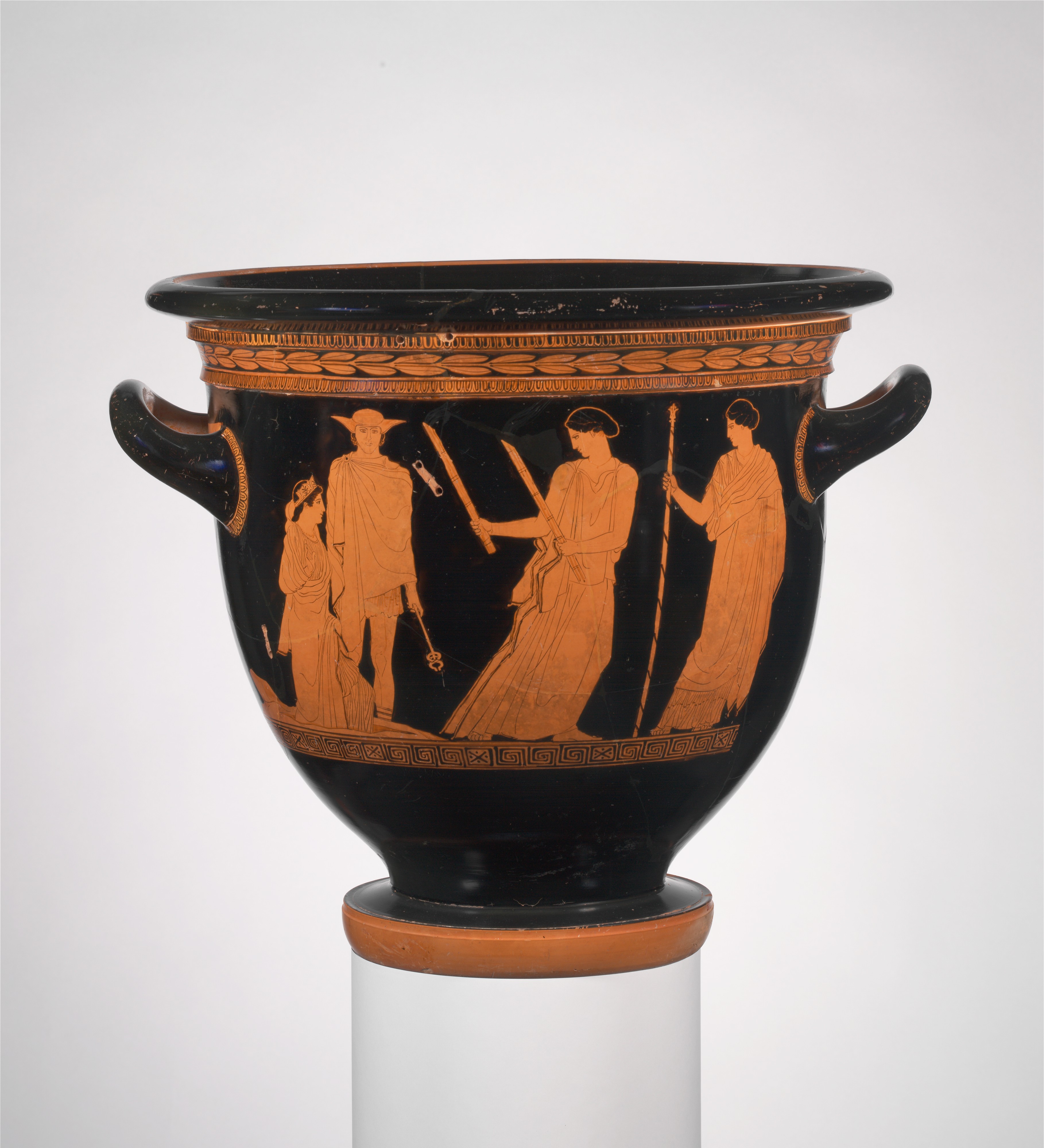
Hildegard of Bingen, a twelfth-century German Benedictine abbess, was a mystic, a healer and an intellectual, whose achievements are hard to believe if we realize that she lived in the times, when women had very limited opportunities. In the so-called High Middle Ages (1000-1250) Christianity was at its peak: monastic life was thriving and Gothic cathedrals were being erected all over Europe. Hildegard’s visionary mysticism was both sublime and rooted in sensuality; her endless body of work spanned painting, composing most sublime music, writing poems on the one hand and establishing monasteries, healing and writing on botany, medicine and theology on the other.
The Sibyl of the Rhine, as she was later called, managed to emancipate her community of sisters from the monks of Disibode, with whom she shared headquarters. She transferred the sisters with their dowries to Mount St Rupert near Bingen in the lush Rhineland valley, notwithstanding the vigorous protestations of her former abbot. (1) At the age of 42 she experienced spiritual awakening, which she thus described:
“… a burning light of tremendous brightness coming from heaven poured into my entire mind. Like a flame that does not burn but enkindles, it inflamed my entire heart and my entire breast, just like the sun that warms an object with rays.” (2)
She spent the subsequent tenyears writing her book Scivias (Know the Ways) and working on her illuminated paintings. In one of the most memorable ones featuring the man in sapphire blue, we can immediately appreciate her unique vision. The man is channeling the compassionate energy of the cosmos through his hands, which are “extended in a manner of healing and assisting.” (3) The figure in blue that Hildegard saw in her vision is “Christ in his earthly ministry” or Christ as man, wrote James Hillman in his Alchemical Psychology (4). His blue colouring is in the midpoint between the black of the earthy nigredo and the sublime white of the next stage of the alchemical opus. Interestingly, blue was also the colour used to depict Vishnu and other Indian gods such as Shiva. One of the explanations that I have come across says that while fighting with a primordial snake demon, Vishnu was bitten and as a result his skin turned blue. That would corroborate Hillman’s point concerning the shadow aspect that is associated with the colour blue in alchemy. Another explanation is that blue symbolizes cosmic wisdom, as the colour of the cosmos is deep blue. The visions of Hildegard truly surpassed the symbolism of Christianity and reached deeper into the universal realm of archetypal images common for all cultures.

Another key concept bequeathed to us by Hildegarde is viriditas – the greening power. She connects it with creativity and bearing fruit. (5) She speaks of the moist power of the earth in the spring. In The Book of Divine Works, which she composed ten years after Scivias, Hildegard gives a voice to the personification of Love, who says:
“I am the fiery life of divine substance, I blaze above the beauty of the fields, I shine in the waters, I burn in sun, moon, and stars. And I awaken all to life with every wind of the air, as with invisible life that sustains everything. For the air lives in greenness and fecundity. The waters flow as though they are alive. The sun also lives in its own light, and when the moon has waned it is rekindled by the light of the sun and thus lives again; and the stars shine out in their own light as though they are alive.” (6)
The universal vision of Hildegard was of cosmic proportions. The following illumination showing the Cosmic Egg is an image of the “universe as surrounded by a firmament of fire.” The stars in the picture stand for planets. (7)


Picturing the Universe as an egg was more characteristic of Pagans than Christians. Here Hildegard displays an unorthodox, deeply feminine vision. The great symbolist Rene Guenon wrote on the World Egg that it contains in seed all that the Cosmos will contain in its fully manifested state, and all that is essential to create life.
Cultivating the Cosmic Tree is another breathtaking vision of microcosm linked to macrocosm that Hildegard included in Scivias. As Matthew Fox says,
“For Hildegard, the cosmic tree and the world axis do not just sit there. They require cultivation and human creativity. The world is organic, but human ingenuity is required to bring the organism to its full potential. (8)
This is reminiscent of Jung’s idea that God needs an individual as much as an individual needs God.

One of the most enigmatic of her illuminations depicts “The Red Head of God Zealous or Erotic Justice.” A terrifying red face looks towards the north. In her vision, the three white wings grew larger and larger while beating the air. Christ spoke to Hildegard in that vision: “This head signifies the zeal of the Lord who is the rod of freedom from unbending injustice.”

rg/en/hildegard-of-bingen
Hildegard excelled in all of her endeavours, more astonishingly so as she was self-taught. She composed inspiring, breathtaking music despite the lack of any formal musical education. She always struck on her own guided purely by her soulful inspiration.
Notes
(1) Matthew Fox, Illuminations of Hildegard of Bingen, Bear and Company: Rochester, Vermont 2002, p. 4-5
(2) Ibid., p. 7
(3) Ibid, p. 32
(4) James Hillman, Alchemical Psychology, Kindle edition
(5) Matthew Fox, Illuminations of Hildegard of Bingen, Bear and Company: Rochester, Vermont 2002, p. 43
(6) Mark Atherton (transl.), Hildegard of Bingen: Selected Writings, Penguin Books, 2001, p. 26
(7) Matthew Fox, Illuminations of Hildegard of Bingen, Bear and Company: Rochester, Vermont 2002, p. 50
(8) Ibid., p. 69
(9) Ibid., p. 145

Support my blog
If you appreciate my writing, consider donating to support my work. Thank you very much in advance.
$1.00












Well of course the Renaissance Women preceded the Renaissance men. 😉
LikeLiked by 1 person
Of course 😉
Thank you for reading – much appreciated.
LikeLiked by 1 person
There are some great recordings of Hildegard’s music. ‘A feather on the breath of God’ is one of the best, though there is even a fun, pop version of her music (Vision). Another Christian mystic who used the egg as a symbol in the 17th c. – ‘This is that gentle heat that brooded on the waters, and in six days hatched the world’. (Thomas Browne’s Religio Medici)
LikeLiked by 1 person
Oh yes, ‘A Feather…’ is outstanding. I first heard her music in a course I took many years ago. It was called Psychology of the New Age. Her music is indeed eternal.
That is good to know about Thomas Browne – thank you.
LikeLike
Wonderfully nourishing to listen to Ave generosa today. Thank you.
“Long live the dead because we live in them.”
― Clarice Lispector – A Breath of Life
LikeLiked by 1 person
It is really one of her most amazing pieces with such beautiful lyrics.
LikeLiked by 1 person
“One such medieval healer, born over 900 years ago, was Hildegard von Bingen. Music was quintessential to Hildegard. She described it as the means of recapturing the original joy and beauty of paradise; invented for divine worship. Perhaps this explains why her music is an appropriate introduction to our assimilation and acclimation sequence with targeted vibro-acoustics therapy — encouraging the spirit to rejoice. The plainchant tradition of a single vocal melodic line oratory seems to evoke the “mother’s instinctual response” to sooth with voice and touch.” — R. Eady, Research Scholar, Scivias Institute for Art & Spirituality (SIAS — based near
Bingen, GE).
See this article for an example of Hildegard’s music applied in one exemplary sequence including
Oratory (plainchant) to waken the body & mediate the mind in the Sonic Chairhttps://www.academia.edu/7739217/Ritual_Response_in_Ancient_Walking_to_Primal_Rhythms
LikeLiked by 1 person
Thank you – this is fascinating. I have always found her music maternal, nourishing and soothing.
LikeLike
An interesting and informative read. Enjoyed this piece very much.
LikeLiked by 1 person
Thank you very much. I have wanted to write about her for a long time.
LikeLike
A fascinating woman, I didn’t know her. Thank you, dearest Monika.🙏💖
LikeLiked by 1 person
Then I’m glad you know her now.
LikeLiked by 1 person
Thank you so much. A remarkable woman. 🦋
LikeLiked by 1 person
Thank you.
LikeLike